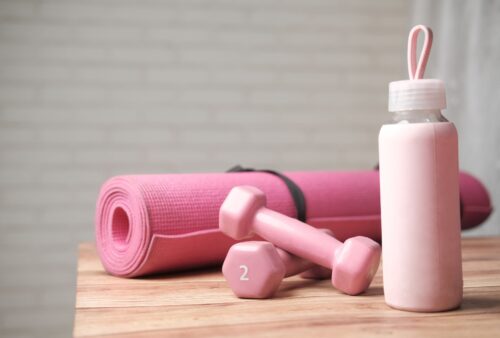5 Powerful Steps to Control Your Environment and Transform Your Habits
You don’t have to be the victim of your environment. You can also be the architect of it.
– James Clear, Atomic Habits

Step 1: Assess Your Current Environment
- Identify Habit Triggers: Walk through your living and working spaces and note what immediately grabs your attention. Is it your phone, a snack, or a cluttered desk? These visual cues often trigger automatic behaviors.
- Evaluate Energy Flow: Are there areas in your home or office that boost your energy? Perhaps your workspace feels cluttered and drains your focus, or your living room encourages relaxation but not productivity.
- Determine How Spaces Support (or Sabotage) Your Goals: Ask yourself whether your current setup aligns with your goals. For example, is your kitchen encouraging healthy eating habits, or do you have junk food in plain sight?
Step 2: Remove Negative Triggers
Now that you’ve assessed your environment, it’s time to take action by eliminating the elements that work against you. Negative triggers are often subtle, but they can have a big impact on your habits and behavior.
- Declutter Your Space: A cluttered space can lead to a cluttered mind. Remove items that don’t serve a purpose or that trigger distractions. For example, if you’re trying to focus on work, remove unnecessary items from your desk that can pull your attention away.
- Hide Unhealthy Cues: If you’re working toward healthier habits, minimize temptations by removing unhealthy food from easy-to-reach places or putting your phone out of sight during focused work sessions.
- Change Unproductive Patterns: Identify areas where you might be prone to bad habits. If your living room couch is where you spend hours scrolling through social media, rearrange the furniture or create a new, intentional space where you can relax without distractions.
Step 3: Introduce Positive Cues for Better Habits


- Make Healthy Choices Convenient: Place items that encourage good habits in easy-to-reach locations. For example, if you want to drink more water, keep a water bottle on your desk. If you’re trying to read more, have books placed in visible and accessible spots around your home.
- Create Visual Reminders: Use visual tools like sticky notes or inspirational quotes where you can see them daily. You could even create a vision board to visually represent your goals.
- Designate Habit Zones: Create specific areas in your home for different activities. A corner dedicated to mindfulness or a tidy desk reserved for work can help you mentally associate that space with productivity or relaxation.
Step 4: Minimize Decision Fatigue
- Pre-plan Your Decisions: Prepare your environment the night before to minimize morning decisions. Lay out workout clothes, prepare healthy snacks, or set up your workspace with everything you need to get started.
- Streamline Your Options: Reduce the number of choices you face daily. Simplify your wardrobe to avoid decision fatigue in the morning, or create a weekly meal plan to take the guesswork out of dinner. These small adjustments eliminate unnecessary choices and make room for better focus.
- Automate Routine Tasks: Where possible, use tools and technology to automate tasks like setting reminders or scheduling repetitive tasks. This helps free up mental bandwidth, so you can focus on cultivating your desired habits.
By creating an environment that minimizes decision fatigue, you’ll have more mental energy to devote to the habits that truly matter.

Step 5: Make Adjustments as You Evolve
Your habits and goals will change over time, and so should your environment. A key to sustaining long-term success is regularly evaluating your space and routines to ensure they’re still aligned with your goals. Think of your environment as a dynamic part of your life—it should grow and evolve as you do.
- Regularly Reassess Your Space: Every few months, take some time to assess your surroundings. Are there any areas that are contributing to distractions or slowing your progress? Are your habits evolving in a way that needs a new setup? Make changes as necessary to keep your environment in line with your goals.
- Stay Flexible: Be open to experimenting with your space to see what works best for you. Perhaps moving your workspace to a different area or adjusting your evening routine could spark new levels of productivity. The key is to remain flexible and adapt as your habits shift.
- Track Your Progress: Keep a journal or a habit tracker to document how your environment affects your daily routines and goals. This can give you insights into what’s working and what needs to be changed over time. Tracking your progress helps you stay aware of your evolving needs.
The Importance of Consistency and Reflection
Cultivating Consistency is Key
- Daily Practice: Aim to engage in your new habits daily. Consistency reinforces neural pathways, making your actions more automatic over time. Whether it’s dedicating a specific time for focused work or creating a nightly routine, regular practice will help solidify these habits.
- Accountability: Consider finding an accountability partner or joining a community with similar goals. Sharing your progress can motivate you to stay on track and create a supportive network that encourages continued growth.
Dedicate Time for Regular Reflection
- Assess Your Environment: Set aside time weekly or monthly to evaluate your environment. Are there elements that distract you or hinder your productivity? Reflect on what is working and what isn’t, and be willing to make adjustments as necessary.
- Journaling: Keeping a journal can be an excellent tool for reflection. Write about your experiences, the habits you’ve formed, and any obstacles you encounter. This practice not only tracks your progress but also provides insights into your emotional responses to your environment and habits.
Celebrate Your Progress and Small Wins
- Recognize Achievements: Take time to celebrate small victories along the way. Acknowledging your progress reinforces positive behaviors and motivates you to continue making intentional choices.
- Revisit Goals: As you grow, your goals may evolve. Periodically revisit and adjust your goals to ensure they align with your current aspirations and values.
Conclusion: Be the Architect of Your Habits
As you implement these strategies, take note of the positive changes in your habits and overall quality of life. You have the power to design an environment that aligns with your aspirations, fostering a life filled with intention, productivity, and joy. So, embrace your role as the architect of your habits and start building the life you truly desire!
Tired of seeing "the chair"? Try these 5 simple tips (tested by myself!) to declutter at home for a
What is Pig Wrestling? And how can it help solve problems? Answer these 5 questions as you break dow
Make every day a Friday by bringing the same happiness and excitement to your life with the new Happ







